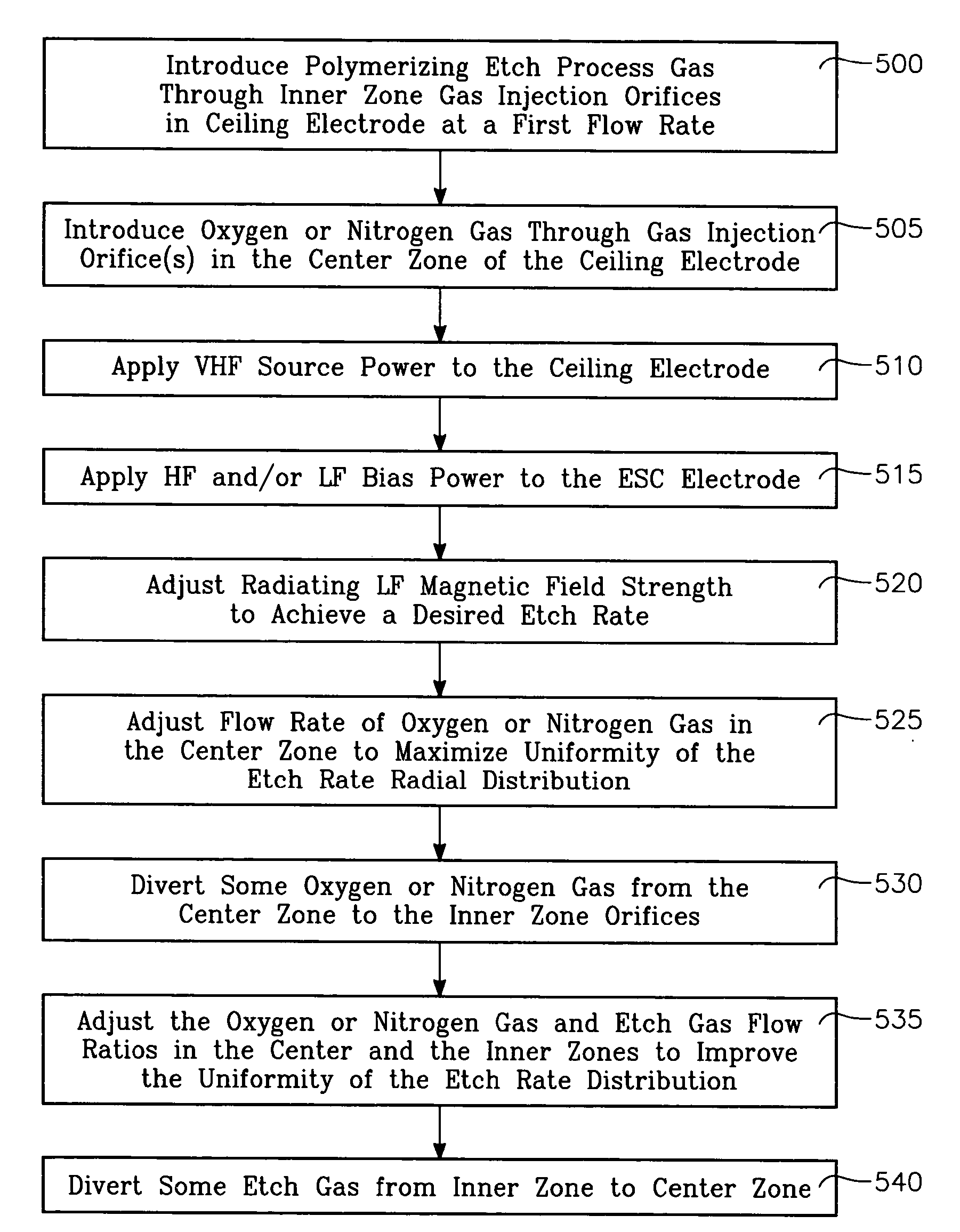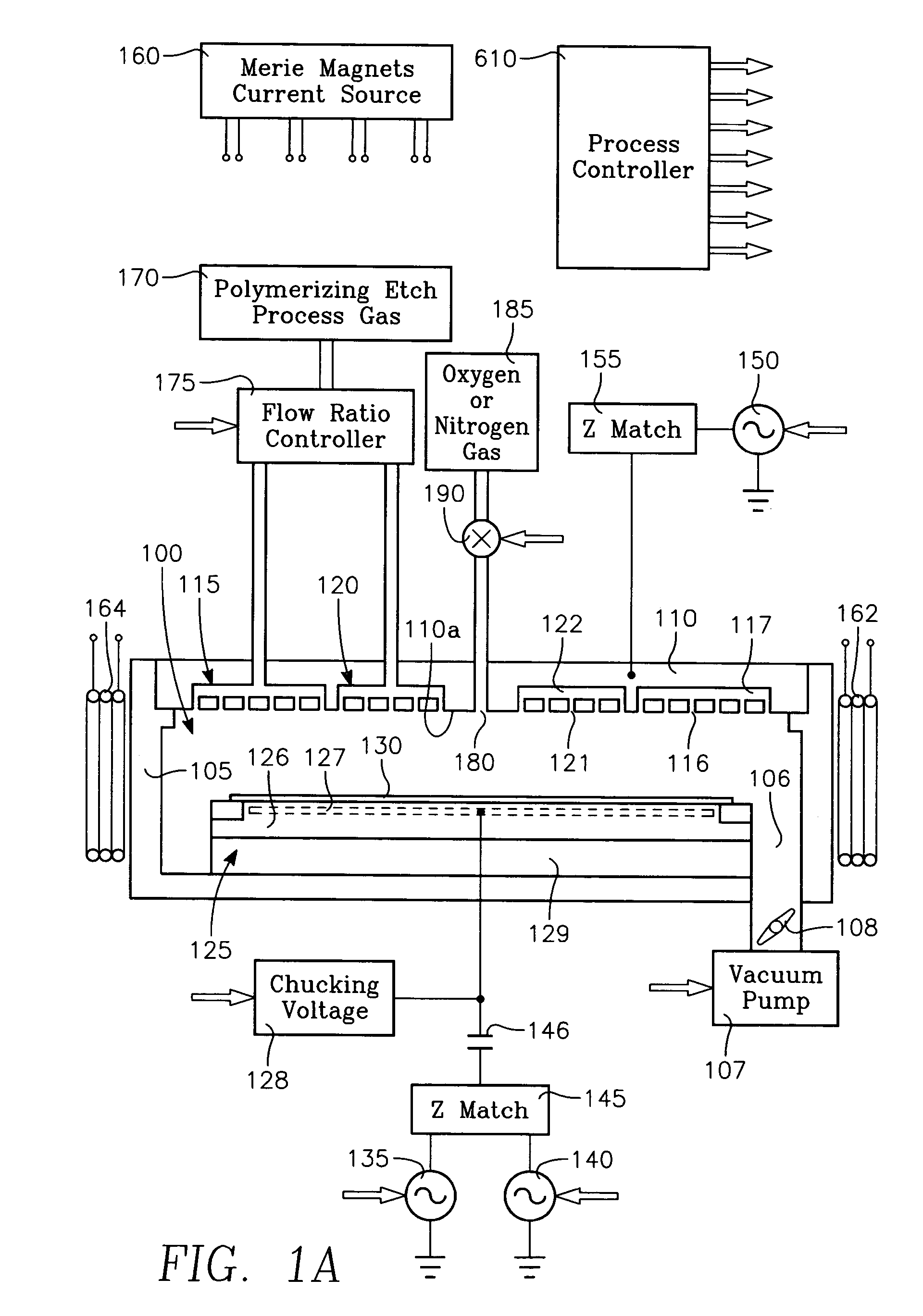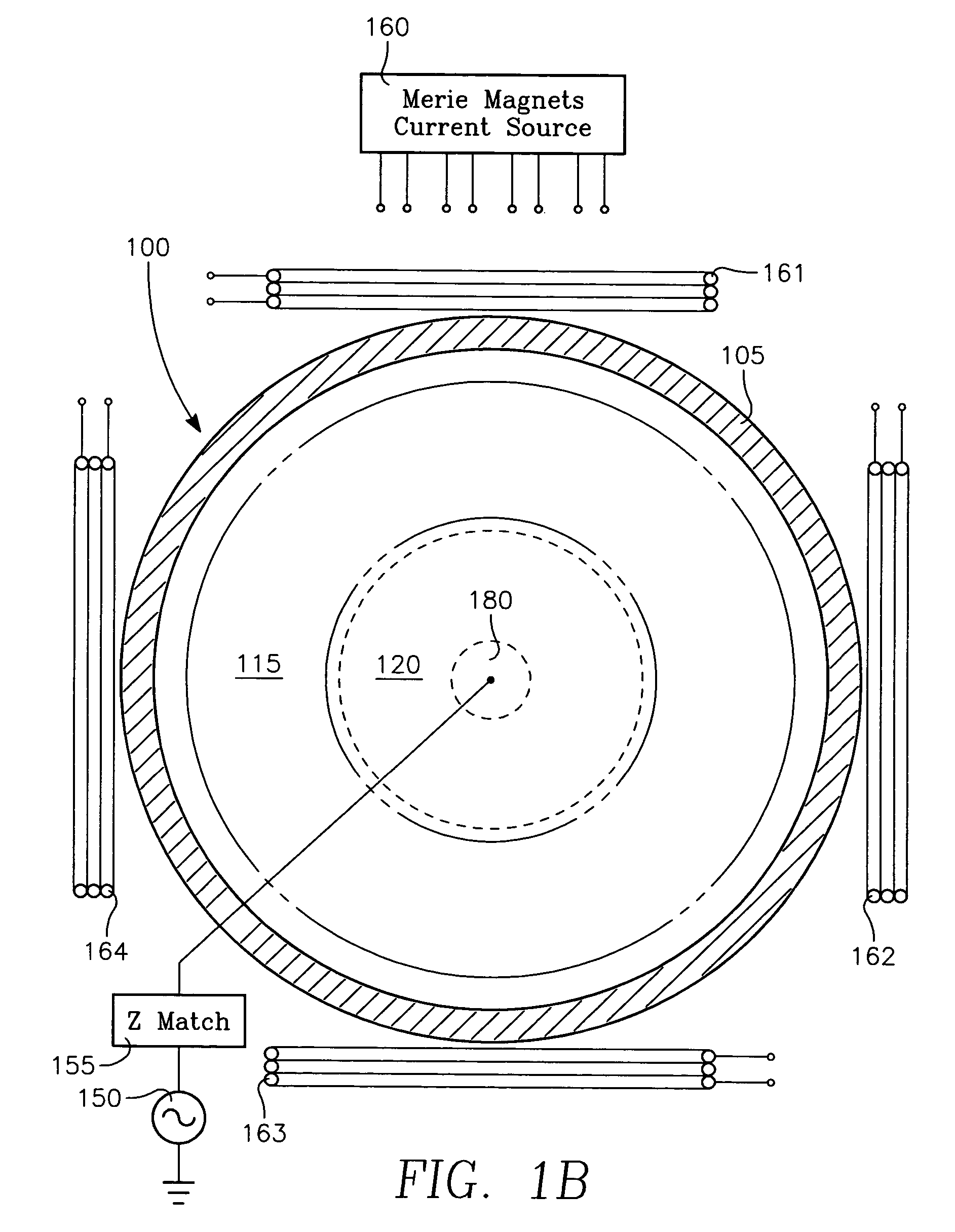Plasma etch process using polymerizing etch gases with different etch and polymer-deposition rates in different radial gas injection zones with time modulation
a technology of etch gas and etch gas, which is applied in the direction of fluid pressure measurement, instruments, vacuum gauges, etc., can solve the problems of etch stop or taper profile appearing to be unavoidable, low center etch rate, and worsening etch rate or etch profile non-uniformity, so as to reduce etch profile tapering and high etch rate , the effect of high polymer deposition ra
- Summary
- Abstract
- Description
- Claims
- Application Information
AI Technical Summary
Benefits of technology
Problems solved by technology
Method used
Image
Examples
Embodiment Construction
[0024]A plasma etch process etches high aspect ratio openings in a dielectric film on a workpiece in a reactor having a ceiling electrode overlying the workpiece and an electrostatic chuck supporting the workpiece. The process includes injecting a polymerizing etch process gas through an annular zone of gas injection orifices in the ceiling electrode, and evacuating gas from the reactor through a pumping annulus surrounding an edge of the workpiece. The high aspect ratio openings are etched in the dielectric film with etch species derived from the etch process gas while depositing a polymer derived from the etch process gas onto the workpiece, by generating a plasma in the reactor by applying VHF source power and / or HF and / or LF bias power to the electrodes at the ceiling and / or the electrostatic chuck. The process further includes slowing the deposition rate of the polymer, minimizing etch stop and / or increasing etch rate in a region of the workpiece typically the center by injecti...
PUM
| Property | Measurement | Unit |
|---|---|---|
| diameter | aaaaa | aaaaa |
| diameter | aaaaa | aaaaa |
| diameter | aaaaa | aaaaa |
Abstract
Description
Claims
Application Information
 Login to View More
Login to View More - R&D
- Intellectual Property
- Life Sciences
- Materials
- Tech Scout
- Unparalleled Data Quality
- Higher Quality Content
- 60% Fewer Hallucinations
Browse by: Latest US Patents, China's latest patents, Technical Efficacy Thesaurus, Application Domain, Technology Topic, Popular Technical Reports.
© 2025 PatSnap. All rights reserved.Legal|Privacy policy|Modern Slavery Act Transparency Statement|Sitemap|About US| Contact US: help@patsnap.com



